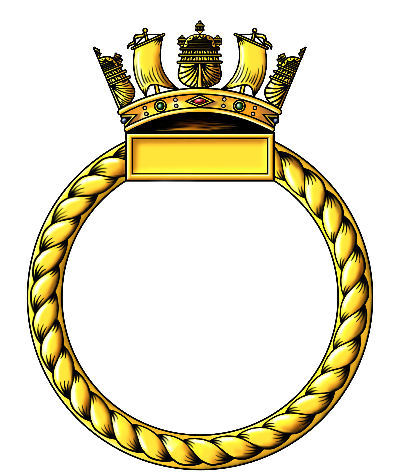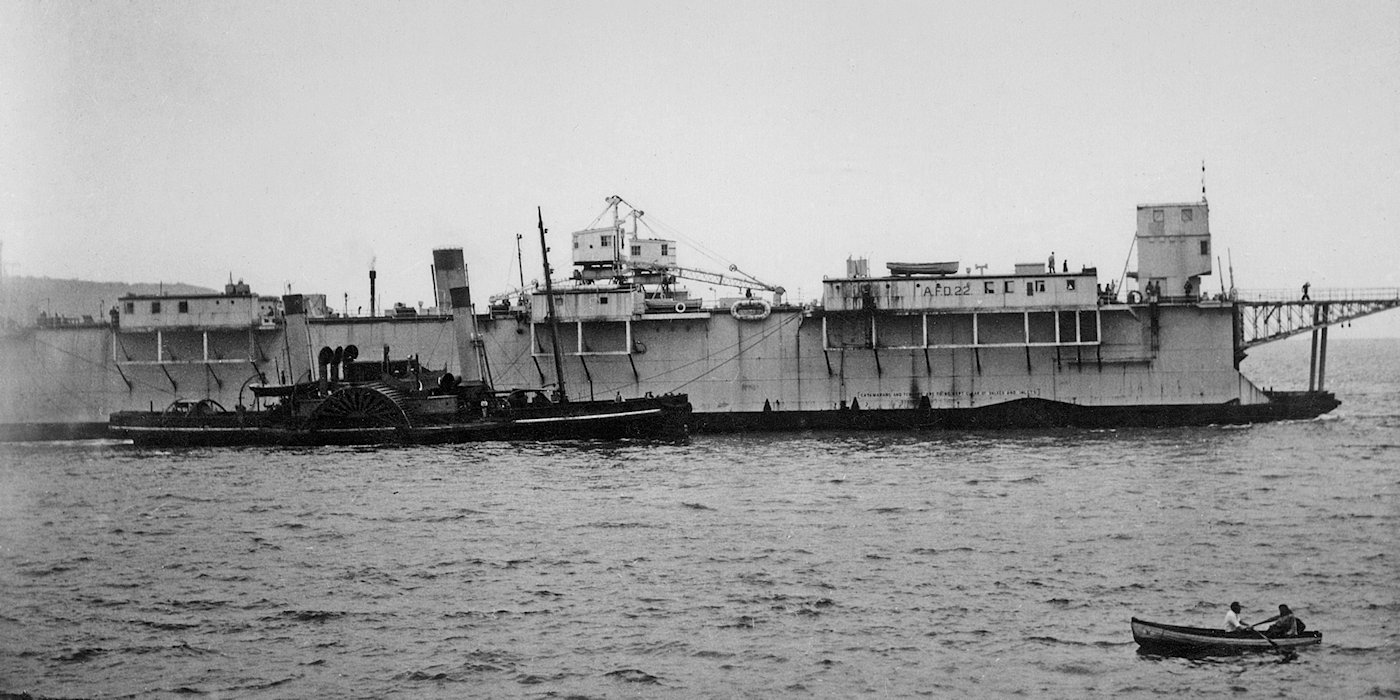Admiralty Floating Dock

Battle Honours
None
Specifications
Builder: ortsmouth Naval Dockyard, Portsmouth, England.
Length: Overall - 380 ft; Pontoons - 350 ft
Width: 50 ft internal
Lifting Capacity: 2,775 tons
Crew complement: 35
Commanding Officers
No information
Related items
None
Reminiscences
None
Gallery
None
A.F.D. 18

A 2,750 tons lifting capacity Clark Stanfield design dock
Early history
Admiralty Floating Dock No. 18 was a Clark Stanfield design dock with a lifting capacity of 2750 tons, originally intended for the emergency docking of escort vessels and destroyers. She was built at Portsmouth Dockyard and was laid down on August 22nd 1941 and completed on October 28th 1942. By November 16th, the dock was on station at Corpach, in Loch Linnhe on the west coast of Scotland. Her stay in Scotland was a short one however; by June 12th 1943 she had been relocated to Oran, Algeria, having been towed there by the tug MARAUDER. While in the Mediterranean she was used by the US Navy and remained there until December 1944 when she was nominated for service with the British Pacific Fleet.
Allocated to the British Pacific Fleet
On departure from Oran her first port of call was Malta were she was prepared for her long tow to the Pacific, she departed Malta under the tow of HMT ENFORCER on January 25th 1945 bound for Port Said. On arrival at Port Said on February 5th she was taken in hand for repairs to damage sustained on passage, she entered the Suez Canal on February 16th and arrived at Aden on the 27th. On March 3rd she slipped her mooring in bad weather and ran aground in shallow waters at Elephants Bay. No serious damage was sustained.
The next leg Aden to Cochin started on March 10th; H.M.S. BANFF escorted AFD18 and ENFORCER to Cochin where they arrived on March 24th. AFD18 was to join up with a second Dock, AFD20, which was also bound for the same operational area in the Admiralty Islands, and which had arrived in Cochin on March 10th
AFD18 & AFD20 departed Cochin for Darwin in Convoy WO.4A on April 9th; AFD18 under tow from the tugs ADVANTAGE, and CHEERLY, and AFD20 under tow from the tugs EMINENT, and DESTINY, A fifth tug, the harbour tug EMPIRE SAM was in company towed astern of AFD20. Escort was provided by the frigates HELFORD and PLYM, both vessels were en-route for the British Pacific Fleet. On 14th April, EMINENT had a serious fire in her engine room and was towed back to Colombo by CHEERLY. In an odd coincidence, DESTINY also had a fire, but got it successfully under control without the need for dockyard assistance. A few days later, the tow line from DESTINY to AFD20 broke and she was adrift in the early hours of the morning; it was five hours before the tow was secured again. With the tug power halved progress was very slow but CHEERLY re-joined the convoy on April 18th and eased the situation for the other tugs. The convoy rendezvoused with the tanker EAGLES DALE on the 27th to replenish water and fuel supplies, which were running, low by this time, and supplied the vessels with other necessities. On nearing Australia, HMAS WARRNAMBOOL and HMAS INVERELL joined the convoy and these ships were ordered to escort AFD 20, and DESTINY, independently to Darwin, which was reached on May 22nd. AFD18 continued in company with HELFORD and PLYM, and arrived in Darwin on the 24th.
The two docks resumed their journey on June 19th to their operational areas; AFD18, now under the tow of the tug HMAS HEROS, and the salvage vessel HMS SALVESTOR, was bound for Milne Bay, Papua New Guinea with two Australian minesweepers HMAS TAMWORTH and HMAS GOULBURN as escorts. AFD20, with HMS EMPIRE SAM, was still towed by DESTINY, and the rescue tug HMAS SPRIGHTLY, were bound for Manus in the Admiralty Islands, the destroyer HMS BARLE provided her escort. The convoy passed through the Torres Strait, and on reaching the south western end of Papua New Guinea AFD18 detached form the group and made her way to Milne Bay, arriving there on July 8th (why it went there is not known). AFD20 continued on to Manus.
Post War
AFD18 finally arrived on station at Manus on August 19th and remained there until November 1945, when she was relocated to Hong Kong, arriving there in December. She moved again, to Singapore Naval Base (Sembawang), in June 1955 when the RN decided to downsize Hong Kong naval base. In December 1968, when the British moved out, the dock was transferred to the custody of the Singapore Government. She was broken-up for scrap in June 1978.
Last modified: 23 February 2023
Primary information sources
Additional sources:
Admiralty War Diaries February 1945
Electronically sourced via Fold3.com Accessed 02 January 2015
Admiralty War Diaries March 1945
Electronically sourced via Fold3.com Accessed 02 January 2015
US Naval Base, Manus, War Diary, August 1945
Electronically sourced via Fold3.com Accessed 02 January 2015
Comments (0)